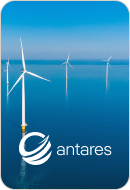Construction of an offshore wind plant
Everything you'd like to know about offshore wind farm construction
The harnessing of offshore wind energy requires the installation of impressive offshore wind farms with large wind turbines equipped with the latest technology. The design, construction, transport and installation of such mega-structures offshore is a technical challenge, highly refined with experience, and requires a process lasting several years.

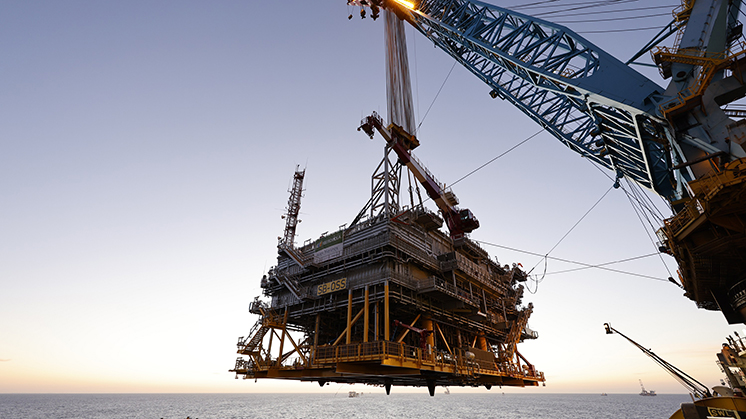
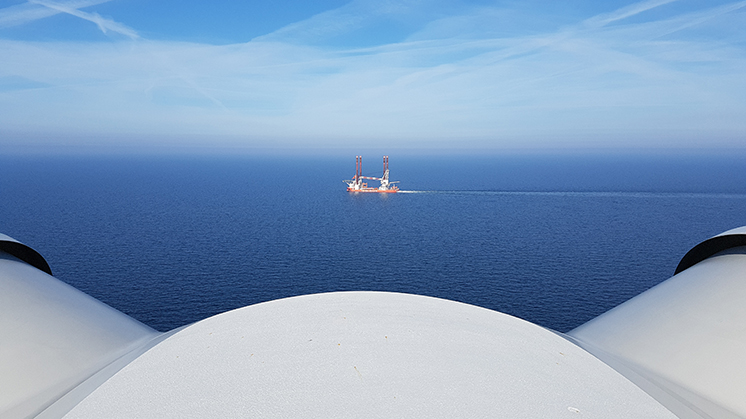
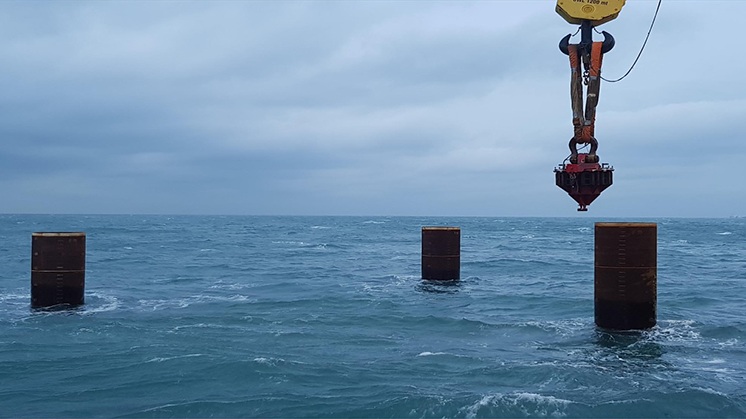
The construction of offshore wind farms begins on land, many kilometres away from the geographical point where they will be installed, and several years in advance of the planned commissioning date. These large-scale constructions, designed to exploit wind energy from the sea, have certain advantages over onshore wind farms: greater wind speed as they do not encounter physical obstacles, less visual and acoustic impact as they are located far from the coast, and fewer limitations in terms of the size of the parts thanks to transport by sea, among others. At the same time, offshore wind installations pose an exciting technical and engineering challenge when it comes to installation, commissioning and maintenance, due to the extreme weather conditions that can occur in the open sea.
Iberdrola has been committed to this technology for years - with the construction of world benchmark wind farms such as West of Duddon Sands or East Anglia One in the United Kingdom and emblematic projects such as Saint-Brieuc in France or Vineyard Wind 1 in the United States - making offshore wind energy a key area of its growth worldwide.
Wind farm construction stages
 Development phase
Development phase
The first phase when considering the construction of a new offshore wind farm is the development phase. This period includes, among other things, procedures to ensure the viability, profitability and positive impact of our project with a view to the tendering process, as well as the management of the different actors or stakeholders involved.
This involves environmental planning, site design, assessment of wind potential, technology review and component selection. Feasibility studies are also carried out and it is time to obtain the relevant permits, such as grid connection and construction permits.
 Pre-construction phase
Pre-construction phase
Once the development phase has been successfully completed, the pre-construction phase follows, which involves the detailed design of the facility and its construction strategy, as well as the development of the chosen site. At this point, the necessary contracts are specified, which will require different suppliers, mainly for the manufacture and installation of the multiple components of the substation(s), the wind turbines, the foundations - or floating platforms for wind farms at greater depths - as well as the cables, in different work centres (such as shipyards) in different countries. Finally, the financial closure of the project is also carried out.
 Construction phase
Construction phase
The final phase is a huge challenge, as it takes place mainly offshore. It consists of the construction, installation, commissioning and grid connection of our renewable installation. Some of the most important milestones of the construction are:
- The construction of the various parts, some of which are very large, in a variety of specialised industrial environments and their transport to the designated logistics centre during the construction phase.
- Driving of the piles as anchor points to support the foundations of the wind turbines (which can be jackets or monopiles).
- Laying of the submarine cables, comprising cables of different cross-sections, linking the turbines to each other, and the turbines to the electricity substation at sea.
- The installation on the foundations of the transition pieces and the complete turbines. The transition pieces join the jacket or pile with the turbine tower of the wind turbine, and their function is to ensure its verticality and to house its auxiliary equipment. Including the underwater and visible parts, a wind turbine can be more than 270 metres high.
- Installation of the jackets and the modules or topsites that make up the marine electrical substation. This can weigh more than 8,000 tonnes in its entirety.
-
In the case of floating wind farms, the platforms are built on land, either in shipyards or camps and launched at sea using launching ramps, semi-submersible barges, dry docks or floating docks. Once launched in port, the wind turbine is assembled. The unit consisting of the float and the wind turbine is towed to the offshore site where the moorings and cables are connected.
- Energisation of the marine substation for commissioning. Intensive work for which a ship-hotel is sometimes set up next to the platform to house employees working in shifts.
- Laying of the offshore export cable to land, and its subsequent connection from the coast to the onshore substation.
 SEE INFOGRAPHIC: Construction of an offshore wind farm [PDF]
SEE INFOGRAPHIC: Construction of an offshore wind farm [PDF]
How long does it take to build an offshore wind farm?
While the construction of an onshore wind farm can take between 4 and 8 years, taking into account all phases of the process, the construction of an offshore wind farm is estimated to take between 7 and 11 years. Three to five years are dedicated to the development phase, one to three to the pre-construction phase and two to four years to construction.
Where is an offshore wind farm installed?
Offshore wind farms with fixed foundations are installed in shallow waters - generally between 30 and 60 metres deep -, far from the coast - increasingly around 70 kilometres away - and taking into account that their locations do not interfere with regular shipping routes, strategic installations or areas of ecological interest. An offshore wind farm as a whole can cover an area of more than 300 km² (equivalent to the archipelago of Malta).
The undisturbed flow of wind offshore has led to rapidly growing interest in this technology and engineering advances in the area. This leads to offshore wind farms being designed to be larger and larger, located further and further away and in deeper and deeper waters. In addition, the number and area of locations for onshore wind farms is becoming more and more limited.
Differences with the siting of floating offshore wind farms
Initially, the greatest potential of floating offshore wind farms lay in being able to install them at depths that fixed foundations could not reach, for technical or profitability reasons. However, the line dividing the depth limit between one type of wind farm and the other is gradually becoming blurred.
On the one hand, the depth of wind farms with fixed foundations is constantly increasing. On the other hand, new configurations are being tested to allow the installation of floating platforms in shallow waters, as a solution for sites where seabed conditions are not conducive to the installation of fixed platforms.
Challenges of offshore wind farm construction
 Maritime transport
Maritime transport
Transporting the parts for the assembly of a wind farm by sea - rather than by road - means that the dimensions of the parts are larger without the possibility of collisions with other elements. However, transporting such large and heavy elements by sea requires specialised vessels for offshore wind operations and great precision and experience when loading them.
Precisely because of the size of the components arriving at the installation port (or operational port if not at the installation port) of a wind farm, these parts are not always stored on land, but may remain in floating storage on barges. Installation vessels transport the components to the wind farm site, pre-assembled whenever possible - the nacelle with the three wind turbine blades, for example - to minimise offshore work.
In addition, in order to install piles, transition pieces and turbines, these ships extend lower legs there until they rest firmly on the seabed and can work with the crane that is incorporated in the placement of the different elements.
 Team coordination
Team coordination
The construction of any offshore wind farm is a multinational and multicultural project, which can involve more than 1,500 people from dozens of different companies. All of this, coupled with generally tight deadlines, highlights the vital importance of good coordination between teams to ensure that everything runs smoothly, with safety at sea and offshore always a top priority.
 Care for marine ecosystems
Care for marine ecosystems
Legislation related to nature conservation issues, such as noise control during drilling processes, varies depending on the country in which a wind farm is installed. At Iberdrola, however, we are fully committed to the conservation of biodiversity and, therefore, to respecting and not harming marine fauna.
Therefore, we are pioneers in the development of noise mitigation systems, successfully used in the construction of wind farms such as Wikinger (in the German Baltic Sea), and we adapt to the characteristics of each environment with actions such as the design of specific Marine Mammal Mitigation Protocols (MMMP), which provide very useful information in the site planning phase.
Other relevant points are the migration of birds and some fish species, for which we use monitoring systems, in order to prevent and avoid any interference during operation or installation, by taking into account nesting or migration periods.
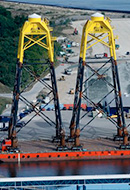
Offshore wind turbines foundations
How are offshore wind turbines anchored at sea?

History of offshore wind energy
Discovering the evolution and impact of offshore wind energy.






